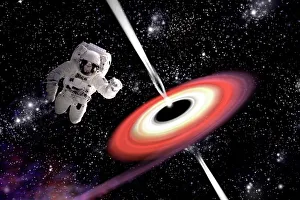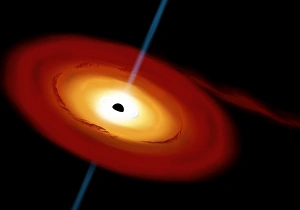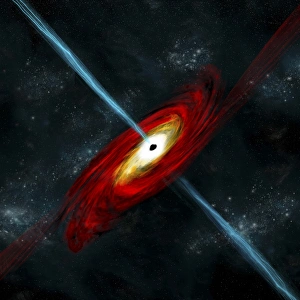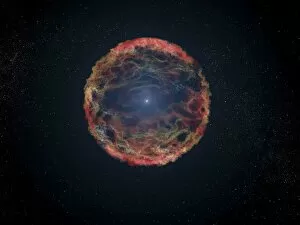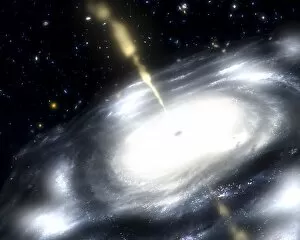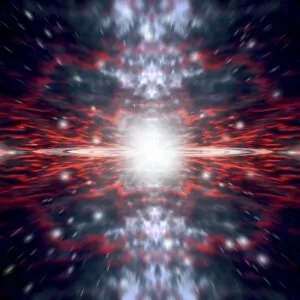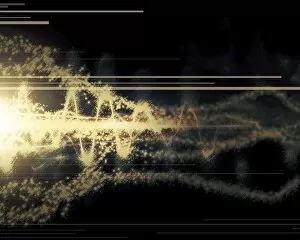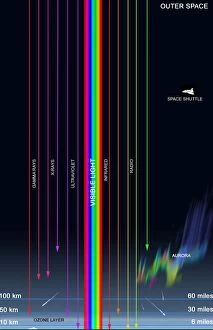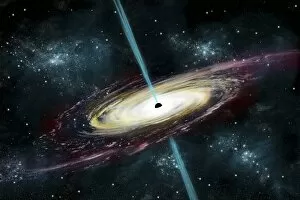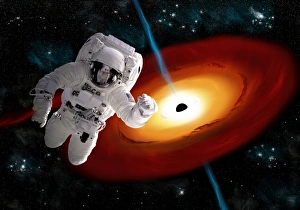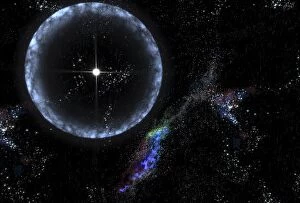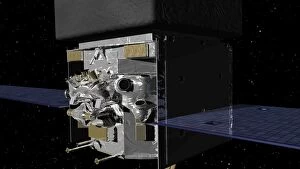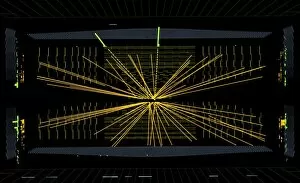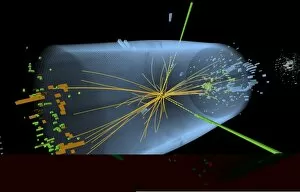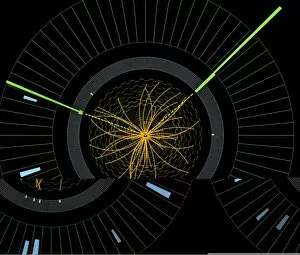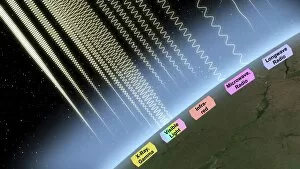Gamma Rays Collection
Gamma rays, the most energetic form of electromagnetic radiation, continue to captivate scientists and artists alike
All Professionally Made to Order for Quick Shipping
Gamma rays, the most energetic form of electromagnetic radiation, continue to captivate scientists and artists alike. In an artist's concept, we witness an astronaut free-falling towards a black hole in the vastness of outer space. The sheer magnitude of this scene becomes apparent when radio data is added, represented by vibrant orange hues that emphasize the scale of Cen A's colossal lobes emitting radio waves. NGC 5128, a majestic elliptical galaxy visible to us in light frequencies, serves as the host for Centaurus A - a remarkable radio source. Astonishingly, the gamma-ray output from Cen A's lobes surpasses its already impressive radio emission by more than tenfold. Thanks to Fermi's Large Area Telescope, we have been able to resolve high-energy gamma rays emanating from an extended region surrounding this active galaxy. The enigmatic allure extends further with depictions showcasing black holes and their accretion disks floating amidst interstellar space. These artistic interpretations remind us of both their mysterious nature and immense power within our universe. Supernova 1993J comes alive through an artist's impression; its explosive energy releases bursts that illuminate distant corners of galaxies. Galactic nuclei also play host to these energetic particles, as they unleash intense bursts across cosmic distances. Intriguingly rare are dusty galaxies producing powerful jets observable through both radio waves and gamma radiation – a testament to their extraordinary nature. Just like a giant ion cannon built for defense against massive ships in science fiction tales, these galactic phenomena wield formidable forces on unimaginable scales. As our understanding deepens and technology advances further into uncharted territories, exploring the mysteries behind gamma rays continues to inspire awe among scientists and artists alike – unveiling glimpses into some of the most captivating phenomena our universe has yet revealed.

